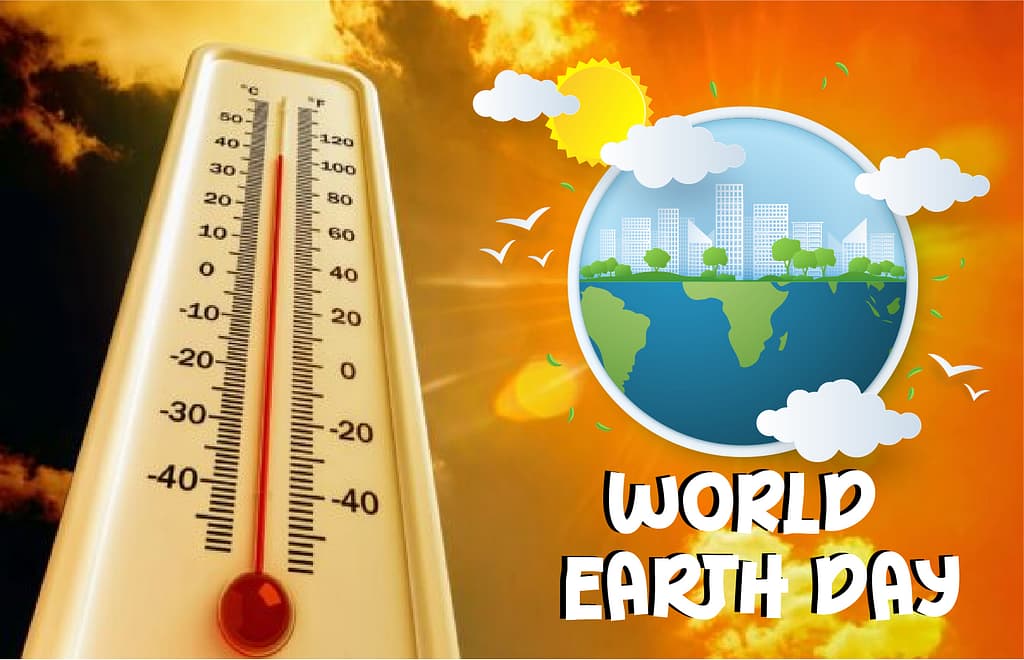Today, as we observe World Earth Day, the undeniable impacts of climate change are becoming increasingly apparent worldwide, with Kenya being no exception. The rise in temperatures, erratic rainfall patterns, and prolonged droughts are now more prevalent, leading to significant social and economic consequences.
In 2024, the global annual mean temperature soared to 1.55 °C above the pre-industrial average of 1850–1900, marking a record high. Furthermore, atmospheric concentrations of the three primary greenhouse gases – carbon, methane, and nitrous oxide – reached unprecedented levels. The ocean heat content in 2024 also reached a historic peak.

Throughout Africa, countries reported a multitude of extreme weather events in 2024, with floods being the most frequently documented. Kenya, Tanzania, Burundi, Nigeria, Mali, Niger, and Chad all experienced severe flooding.
According to the recent report released by the Kenya Meteorological Department on the State of Climate in Kenya, 2024 marked the hottest year on record in the country, reflecting the global trend of rising temperatures. The counties of Turkana, Mandera, Meru, and Mombasa experienced consistently high temperatures throughout the year.
The report also highlighted significant rainfall variability across the country, with the western and central highlands receiving above-normal rainfall, while other regions faced drier-than-average conditions.

The above-average rainfall saw some areas receiving 111-200% of their long-term mean, leading to widespread flooding that affected over 100,000 households. In Nairobi, heavy rainfall resulted in the displacement of residents in informal settlements such as Mathare, Kibera, and Mukuru. Similarly, the northeastern part of the country, including Mandera, Wajir, Isiolo, Garissa, and Tana River counties, experienced heavy rains and river overflow, leading to widespread flooding that destroyed approximately 30,000 hectares of crops and resulted in the loss of around 15,000 livestock.
The coastal regions, including Kilifi, Taita Taveta, Kwale, and Lamu, also faced severe flooding. In Kilifi, the overflowing Sabaki River displaced farmers and disrupted education, while in Lamu, flash floods damaged health services and restricted healthcare access in areas like Chalaluma and Pandanguo. The destruction of critical infrastructure, such as roads and bridges, further exacerbated the challenges faced by affected communities.
According to science, tackling climate change requires a multifaceted approach, including reducing greenhouse gas emissions, adapting to changing conditions, and promoting sustainable practices. Some of the recommended actions are:
• Transition to Renewable Energy: Shifting from fossil fuels to renewable energy sources like solar, wind, and hydro power is crucial.
• Energy Efficiency: Improving energy efficiency in buildings, transportation, and industry can significantly reduce emissions.
• Sustainable Transportation: Opting for public transport, electric vehicles, and cycling can lower emissions from the transportation sector.
• Diet Changes: Reducing meat consumption and choosing more plant-based meals can significantly lower individual’s carbon footprint.
• Reduce Food Waste: Minimizing food waste at home and along the supply chain can reduce emissions from food production and transportation.
• Climate-Resilient Infrastructure: Investing in infrastructure that can withstand extreme weather events is crucial for adaptation.
• Water Management: Developing strategies to manage water resources effectively in the face of changing rainfall patterns is vital.
• Natural Habitat Restoration: Protecting and restoring natural ecosystems can help buffer against the impacts of climate change.
• Community Resilience: Empowering communities to adapt to local climate impacts through education and training is essential.
• Sustainable Agriculture: Adopting farming practices that reduce greenhouse gas emissions and enhance soil health is important.
• Sustainable Forestry: Managing forests sustainably can help absorb carbon dioxide from the atmosphere and provide ecosystem services.
• Circular Economy: Promoting the circular economy, where materials are reused and recycled, can reduce waste and emissions.
• Education and Awareness: Raising awareness about climate change and its impacts can empower individuals to take action.
• Policy and Advocacy: Advocating for policies that support climate action, such as carbon pricing and renewable energy targets, is crucial.




